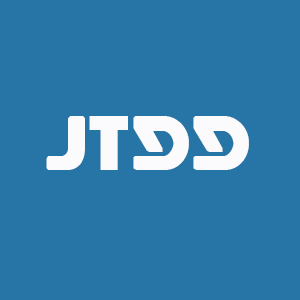REFERENCES
1. Ferreira C, Pierre G, Thompson R, et al. Barth Syndrome. Available from: https://www.ncbi.nlm.nih.gov/books/NBK247162/ [Last accessed on 13 Sep 2024].
2. Gonzalez IL. Barth syndrome: TAZ gene mutations, mRNAs, and evolution. Am J Med Genet A 2005;134:409-14.
3. Bione S, D’Adamo P, Maestrini E, Gedeon AK, Bolhuis PA, Toniolo D. A novel X-linked gene, G4.5 is responsible for Barth syndrome. Nature Genetics 1996;12:385-9.
4. Cosson L, Toutain A, Simard G, et al. Barth syndrome in a female patient. Mol Genet Metab 2012;106:115-120.
5. Avdjieva-Tzavella DM, Todorova AP, Kathom HM, et al. Barth syndrome in male and female siblings caused by a novel mutation in the TAZ gene. Genetic Counseling 2016;27:495-501.
6. Xu Y, Malhotra A, Ren M, Schlame M. The enzymatic function of tafazzin. J Biol Chem 2006;281:39217-24.
7. Schlame M, Xu Y. The function of tafazzin, a mitochondrial phospholipid–lysophospholipid acyltransferase. J Mol Biol 2020;432:5043-51.
8. Kagan VE, Tyurina YY, Mikulska-Ruminksa K, et al. Anomalous peroxidase activity of cytochrome c is the primary pathogenic target in Barth syndrome. Nature Metabolism 2023;5:2184-205.
9. Ji J, Greenberg ML. Cardiolipin function in the yeast S: cerevisiae and the lessons learned for Barth syndrome. J Inherit Metab Dis 2022;45:60-71.
10. Paradies G, Paradies V, Ruggiero FM, Petrosillo G. Role of cardiolipin in mitochondrial function and dynamics in health and disease: molecular and pharmacological aspects. Cells 2019;8:728.
11. Ren M, Miller PC, Schlame M, Phoon CK. A critical appraisal of the tafazzin knockdown mouse model of Barth syndrome: what have we learned about pathogenesis and potential treatments? Am J Physiol Heart Circ Physiol 2019;317:H1183-H1193.
12. Vaz FM, van Lenthe H, Vervaart MAT, et al. An improved functional assay in blood spot to diagnose Barth syndrome using the monolysocardiolipin/cardiolipin ratio. J Inherit Metab Dis 2022;45:29-37.
13. Barth PG, Scholte HR, Berden JA, et al. An X-linked mitochondrial disease affecting cardiac muscle, skeletal muscle and neutrophil leucocytes. J Neurol SCI 1983;62:327-355.
14. Kelley RI, Cheatham JP, Clark BJ, et al. X-linked dilated cardiomyopathy with neutropenia, growth retardation, and 3-methylglutaconic aciduria. J Pediatr-US 1991;119:738-47.
15. Hornby B, Thompson WR, Almuqbil M, et al. Natural history comparison study to assess the efficacy of elamipretide in patients with Barth syndrome. Orphanet J Rare Dis 2022;17:1-9.
16. Roberts AE, Nixon C, Steward CG, et al. The barth syndrome registry: distinguishing disease characteristics and growth data from a longitudinal study. Am J Med Genet A 2012;158:2726-32.
17. Steward CG, Groves SJ, Taylor CT, et al. Neutropenia in Barth syndrome. characteristics, risks, and management. Curr Opin Hematol 2019;26:6-15.
18. A report on the externally-led patient-focused drug development meeting. Available from: https://barthsyndrome.org/newsevents/pfddmeeting/voiceofthepatient.html. [Last accessed on 13 Sep 2024].
19. Taylor C, Rao ES, Pierre G, et al. Clinical presentation and natural history of Barth Syndrome: an overview. J Inherit Metab Dis 2022;45:7-16.
20. Reynolds S. Successful management of Barth syndrome. a systematic review highlighting the importance of a flexible and multidisciplinary approach. J Multidiscip Health 2015;8:345-58.
21. Lontok E, Milligan E, Bowen VM, McCurdy KR. Barth syndrome foundation. From humble beginnings to becoming an integral partner. J Inherit Metab Dis 2022;45:3-6.
22. Barth syndrome registry and repository. Available from: https://barthsyndromeregistry.patientcrossroads.org. [Last accessed on 13 Sep 2024].
23. Mazar I, Stokes J, Ollis S, et al. Understanding the life experience of Barth syndrome from the perspective of adults. a qualitative one-on-one interview study. Orphanet J Rare Dis 2019;14:1-8.
24. PROMIS Fatigue Scoring Manual. Available from: https://www.fda.gov/media/137977/download [Last accessed on 13 Sep 2024].
25. Kang SL, Forsey J, Dudley D, Steward CG, Tsai-Goodman B. Clinical characteristics and outcomes of cardiomyopathy in Barth syndrome: the UK experience. Pediatric Cardiology 2016;37:167-17.
27. Wilson JMG, Jungner F. Principles and practice of screening for disease. Available from: https://apps.who.int/iris/handle/10665/37650 [Last accessed on 13 Sep 2024].
28. Ross LF, Clarke AJ. A historical and current review of newborn screening for neuromuscular disorders from around the world: lessons for the United States. Pediatric Neurology 2017;77:12-22.
29. Grosse SD, Boyle CA, Kenneson A, Khoury MJ, Wilfond BS. From public health emergency to public health service. the implications of evolving criteria for newborn screening panels. Pediatrics 2006;117:923-9.
30. Gehtland LM, Bailey DB. Early Check. A north carolina research partnership. NC Med J 2019;80:59-61.
31. Rigaud C, Lebre AS, Touraine R, et al. Natural history of Barth syndrome: a national cohort study of 22 patients. Orphanet J Rare Dis 2013;8:70.
32. Spencer CT, Bryant RM, Day J, et al. Cardiac and clinical phenotype in Barth syndrome. Pediatrics 2006;118:E337-46.
34. Palsson OS, Whitehead W, Törnblom H, Sperber AD, Simren M. Prevalence of Rome IV functional bowel disorders among adults in the United States, Canada, and the United Kingdom. Gastroenterology 2020;158:1262-1273.
35. Kelley R. Management of diarrheal illness in patients with Barth syndrome. Available from: https://www.barthsyndrome.org.uk/userfiles/Factsheets/ManagementofDiarrheainBTHSFactSheet.pdf [Last accessed on 13 Sep 2024].
36. Filler K, Lyon D, Bennett J, et al. Association of mitochondrial dysfunction and fatigue. a review of the literature. BBA clinical 2014;1:12-23.
37. Olivar-Villanueva M, Ren M, Phoon CK. Neurological & psychological aspects of Barth syndrome: clinical manifestations and potential pathogenic mechanisms. Mitochondrion 2021;61:188-95.
38. Kim AY, Vernon H, Manuel R, Almuqbil M, Hornby B. Quality of life in Barth syndrome. Ther Adv Rare Dis 2022;3:26330040221093743.
39. Reynolds S, Babson I, Daw E. A qualitative investigation of fatigue & its daily impacts as perceived by individuals with Barth syndrome & their families. Am J Occup Ther 2023;77(Supplement 2):7711510338p1.
40. Thompson R, Jefferies J, Wang S, et al. Current and future treatment approaches for Barth syndrome. J Inherit Metab Dis 2021;45:1.
41. Suzuki-Hatano S, Saha M, Rizzo SA, et al. AAV-mediated TAZ gene replacement restores mitochondrial and cardioskeletal function in Barth syndrome. Human Gene Therapy 2019;30:139-54.









